Abstract
The growth process in germinating barley seeds and its inhibition by actinomycin D and puromycin were investigated. Soon after seeds are imbided, their respiratory activity increases several fold, and the protein- and carbohydrate-synthesizing systems become active. The immediate activation of protein synthesis and its inhibition by actinomycin D and puromycin suggest that the dry seed has all the components necessary for protein synthesis.
Although a good correlation exists between the rate of oxygen uptake and that of protein synthesis during the first 12 hr of germination, respiration appears to be independent of protein synthesis during the first 8 hr, as reflected by the insensitivity of the respiratory process to actinomycin D and puromycin. However, after 8 hr both antibiotics reduce oxygen uptake as well as subsequent seedling growth.
The distribution of 14C, derived from labeled glucose during the early hours of barley germination, among various fractions of metabolites, indicated that 50 to 70% of the utilized glucose appeared in 14CO2. The rest of the incorporated label appeared in hemicelluloses and starch, water-soluble ethanol-insoluble carbohydrates, and to a lesser extent in proteins and cellulose.
Full text
PDF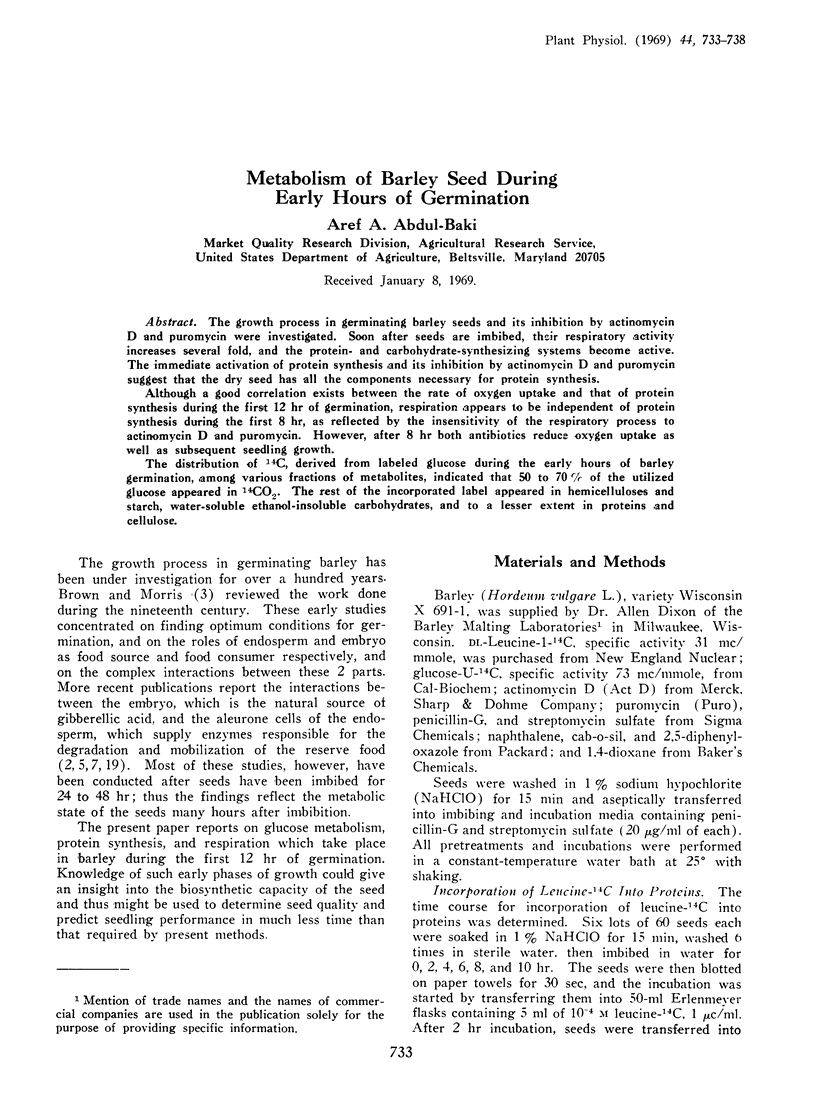

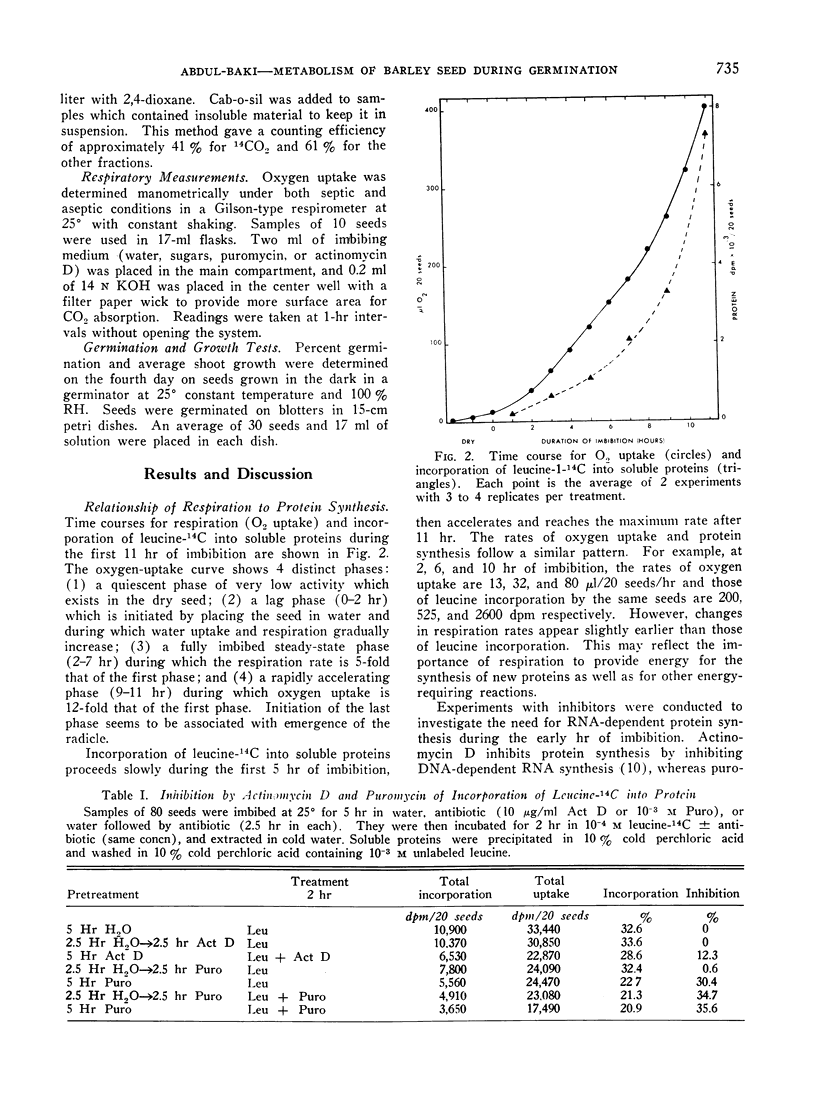
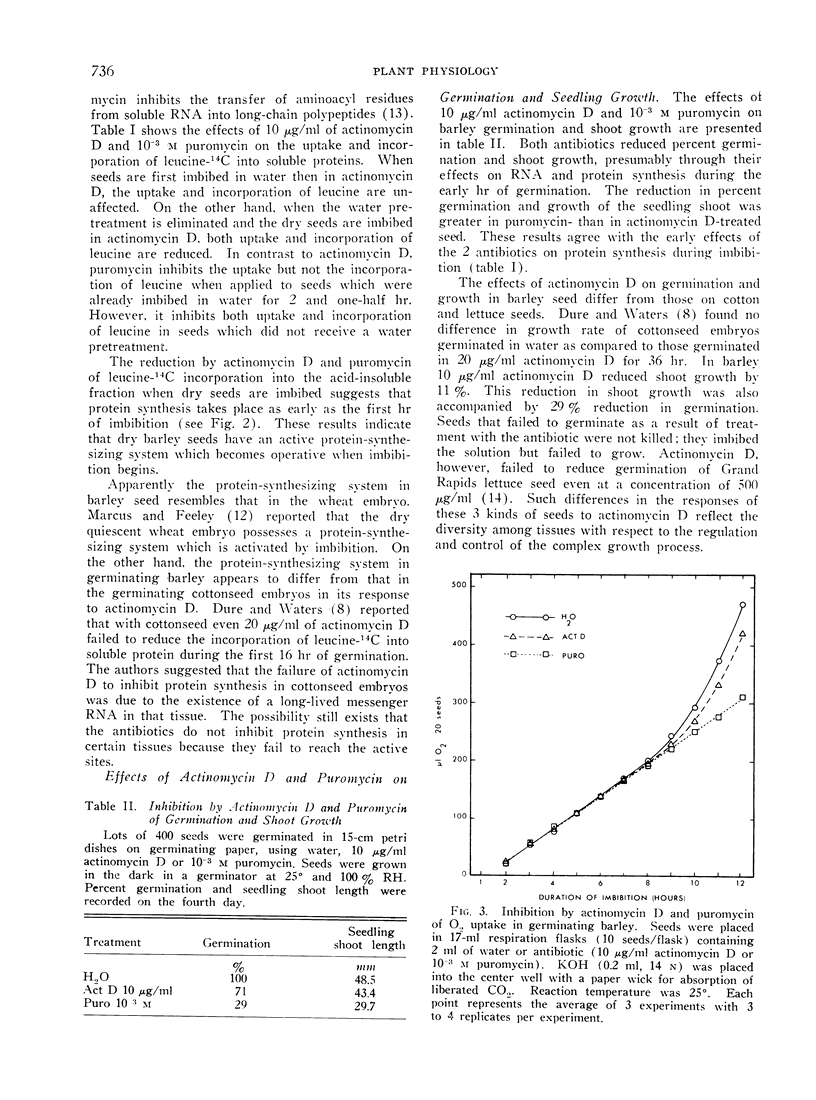
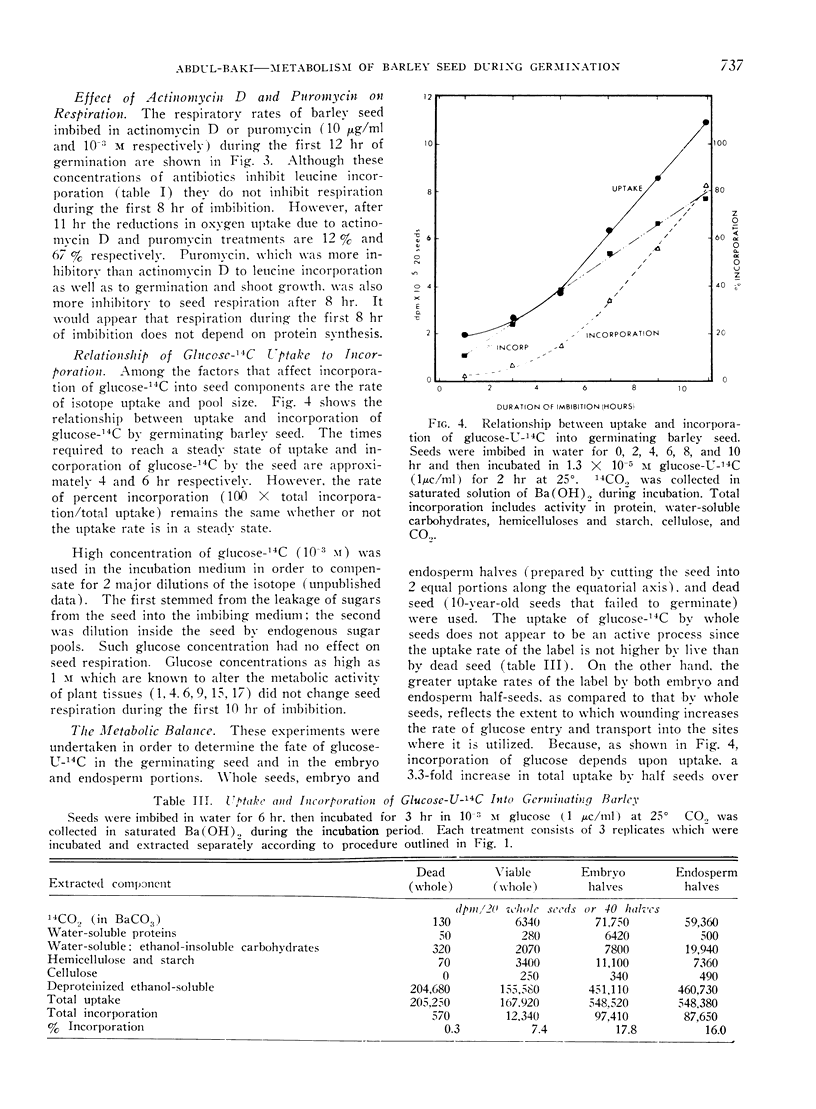
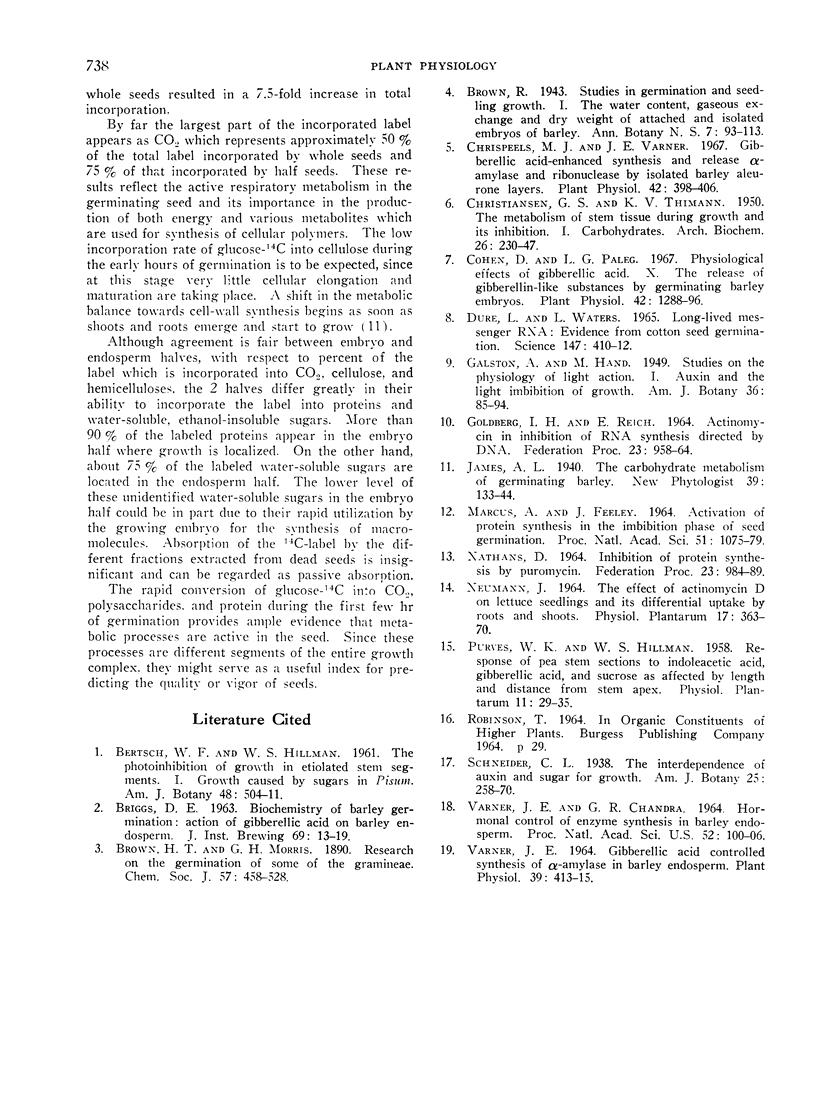
Selected References
These references are in PubMed. This may not be the complete list of references from this article.
- CHRISTIANSEN G. S., THIMANN K. V. The metabolism of stem tissue during growth and its inhibition. I. Carbohydrates. Arch Biochem. 1950 Apr;26(2):230–247. [PubMed] [Google Scholar]
- Chrispeels M. J., Varner J. E. Gibberellic Acid-enhanced synthesis and release of alpha-amylase and ribonuclease by isolated barley and aleurone layers. Plant Physiol. 1967 Mar;42(3):398–406. doi: 10.1104/pp.42.3.398. [DOI] [PMC free article] [PubMed] [Google Scholar]
- Cohen D., Paleg L. G. Physiological effects of gibberellic Acid. X. The release of gibberellin-like substances by germinating barley embryos. Plant Physiol. 1967 Sep;42(9):1288–1296. doi: 10.1104/pp.42.9.1288. [DOI] [PMC free article] [PubMed] [Google Scholar]
- DURE L., WATERS L. LONG-LIVED MESSENGER RNA: EVIDENCE FROM COTTON SEED GERMINATION. Science. 1965 Jan 22;147(3656):410–412. doi: 10.1126/science.147.3656.410. [DOI] [PubMed] [Google Scholar]
- GOLDBERG I. H., REICH E. ACTINOMYCIN INHIBITION OF RNA SYNTHESIS DIRECTED BY DNA. Fed Proc. 1964 Sep-Oct;23:958–964. [PubMed] [Google Scholar]
- Marcus A., Feeley J. ACTIVATION OF PROTEIN SYNTHESIS IN THE IMBIBITION PHASE OF SEED GERMINATION. Proc Natl Acad Sci U S A. 1964 Jun;51(6):1075–1079. doi: 10.1073/pnas.51.6.1075. [DOI] [PMC free article] [PubMed] [Google Scholar]
- NATHANS D. INHIBITION OF PROTEIN SYNTHESIS BY PUROMYCIN. Fed Proc. 1964 Sep-Oct;23:984–989. [PubMed] [Google Scholar]
- Varner J. E., Chandra G. R. HORMONAL CONTROL OF ENZYME SYNTHESIS IN BARLEY ENDOSPERM. Proc Natl Acad Sci U S A. 1964 Jul;52(1):100–106. doi: 10.1073/pnas.52.1.100. [DOI] [PMC free article] [PubMed] [Google Scholar]
- Varner J. E. Gibberellic Acid Controlled Synthesis of alpha-Amylase in Barley Endosperm. Plant Physiol. 1964 May;39(3):413–415. doi: 10.1104/pp.39.3.413. [DOI] [PMC free article] [PubMed] [Google Scholar]


